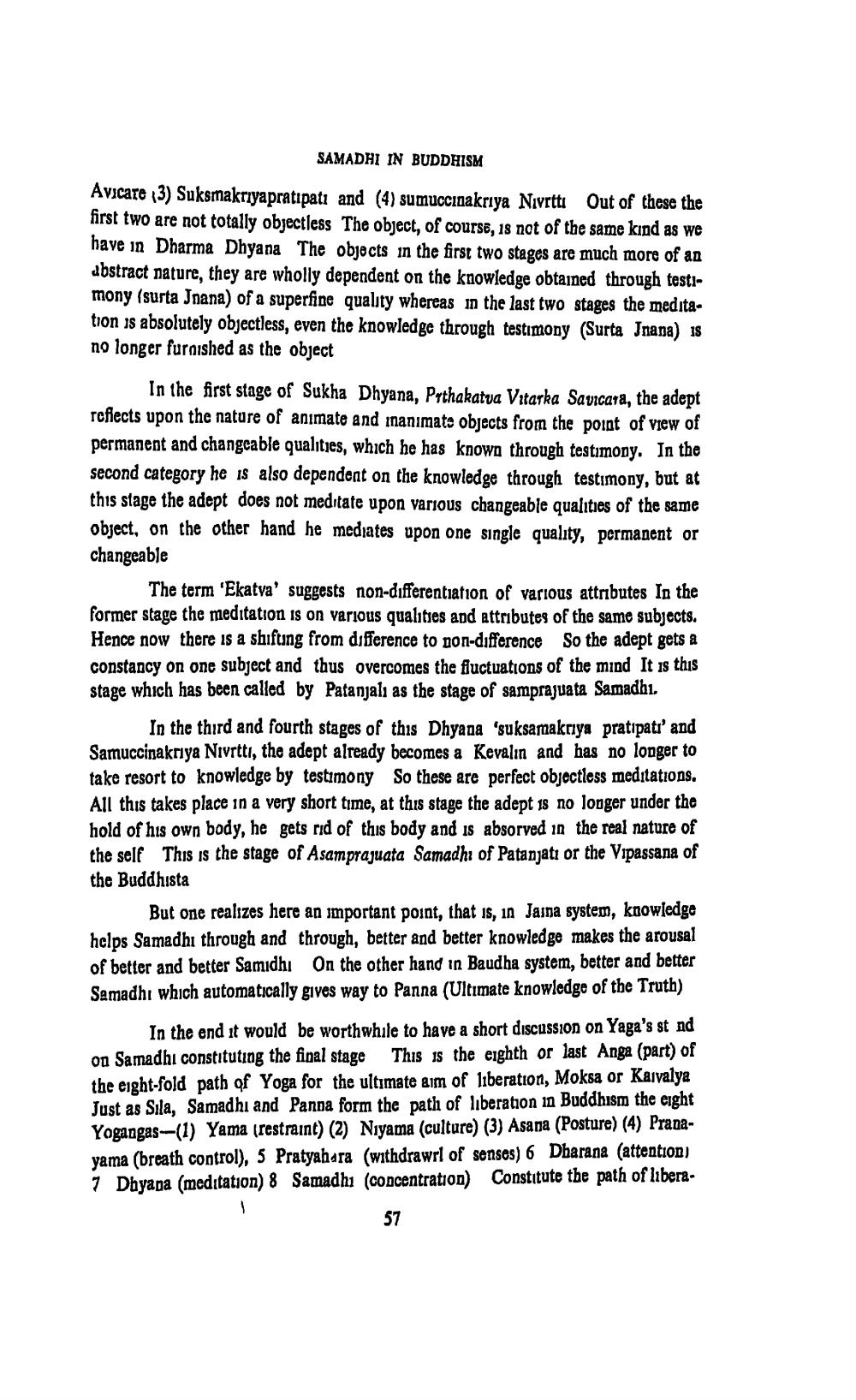________________
SAMADHI IN BUDDHISM
Avicare 3) Suksmakriya pratipati and (4) sumuccinakriya Niyrtti Out of these the first two are not totally objectless The object, of course, 18 not of the same kind as we have in Dharma Dhyana The objects in the first two stages are much more of an abstract nature, they are wholly dependent on the knowledge obtained through testimony (surta Jnana) of a superfine quality whereas in the last two stages the meditation is absolutely objectless, even the knowledge through testimony (Surta Jnana) is no longer furnished as the object
In the first stage of Sukha Dhyana, Pythakatua Vitarka Savicata, the adept reflects upon the nature of animate and inanimate objects from the point of view of permanent and changcable qualities, which he has known through testimony. In the second category he is also dependent on the knowledge through testimony, but at this stage the adept does not meditate upon various changeable qualities of the same object, on the other hand he mediates upon one single quality, permanent or changeable
The term 'Ekatya' suggests non-differentiation of various attributes In the former stage the meditation is on various qualities and attributes of the same subjects. Hence now there is a shifting from difference to non-difference So the adept gets a constancy on one subject and thus overcomes the fluctuations of the mind It is this stage which has been called by Patanjalı as the stage of samprajuata Samadhi.
In the third and fourth stages of this Dhyana 'suksamakriya pratipati' and Samuccinakriya Nevrtti, the adept already becomes a Kevalin and has no longer to take resort to knowledge by testimony So these are perfect objectless meditations. All this takes place in a very short time, at this stage the adept is no longer under the hold of his own body, he gets rid of this body and is absorved in the real nature of the self This is the stage of Asamprajuata Samadhi of Patanjatı or the Vipassana of the Buddhista
But one realizes here an important point, that is, in Jaina system, knowledge helps Samadhi through and through, better and better knowledge makes the arousal of better and better Samidhi On the other hand in Baudha system, better and better Samadhi which automatically gives way to Panna (Ultimate knowledge of the Truth)
In the end it would be worthwhile to have a short discussion on Yaga's st nd on Samadhi constituting the final stage This is the eighth or last Anga (part) of the eight-fold path of Yoga for the ultimate aim of liberation, Moksa or Kaivalya Just as Sila, Samadhi and Panna form the path of liberation in Buddhism the eight Yogangas-(1) Yama (restraint) (2) Niyama (culture) (3) Asana (Posture) (4) Pranayama (breath control), 5 Pratyahara (withdrawrl of senses) 6 Dharana (attention) 7 Dhyana (meditation) 8 Samadhi (concentration Constitute the path of libera
57




